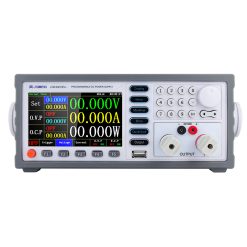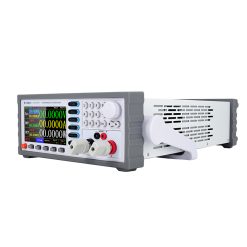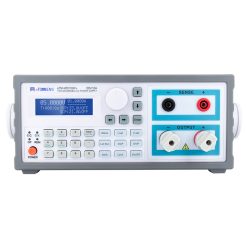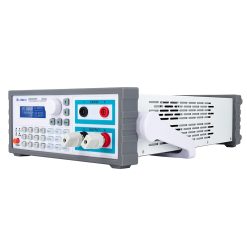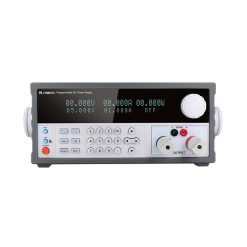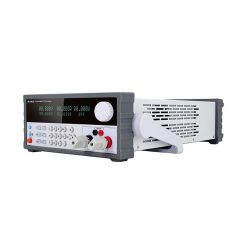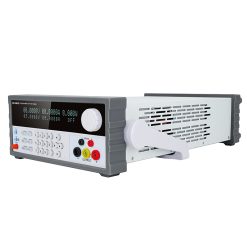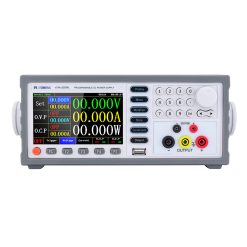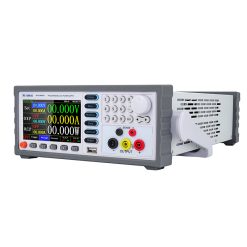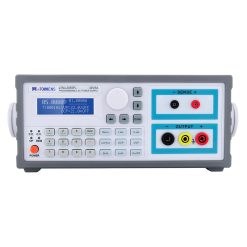When looking for the perfect benchtop DC power supply to meet the demands of your applications, you are presented with two primary choices: linear power supply and switching power supply.
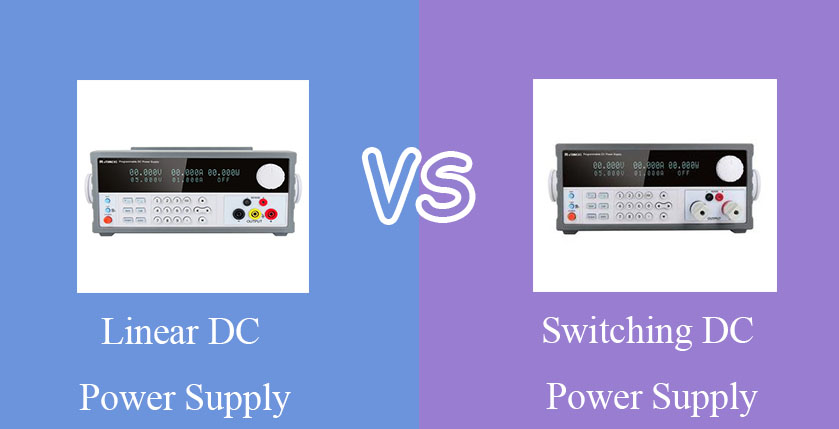
Each option comes with its own set of strengths and weaknesses, which are crucial to weigh as you select the best bench power supply for your requirements. However, this decision can become challenging, especially for individuals who are not particularly knowledgeable about DC bench power supply. Luckily, we’re prepared to provide all the essential information you need to understand.
What’s the Difference between Linear and Switching DC Power Supply?
The DC switching power supply and linear DC power supply are two distinct types of DC power supply, which exhibit some clear differences in terms of principles, energy efficiency, and response to load fluctuations. Below are the main differences between the linear and switching power supply:
Working Principle
Both switching and linear power supplies are designed to provide stable direct current (DC). The fundamental principle of a DC linear power supply involves lowering the input alternating current (AC) voltage through a transformer, then converting it to DC via rectification and filtering, and finally delivering a stable DC output with a capacitor in the smoothing circuit.
In contrast, a switch mode DC power supply directly rectifies the input AC to DC and toggles the switch on and off at high speed to generate high-frequency pulse currents. These pulses are then converted into a stable DC output through the action of a high-frequency transformer.
Energy Efficiency
Linear power supplies regulate output by converting excess voltage into heat, resulting in significant energy losses, particularly with large voltage differences between input and output. While effective for producing stable DC power, this method is less energy-efficient due to the wasteful dissipation of excess energy as heat.
The switch mode power supply is more energy-efficient, utilizing rapid on-off switching to modulate input power and achieve the desired output voltage. This method minimizes heat dissipation and energy loss, often reaching efficiencies of 80-90%, making them a more favorable option for applications where energy efficiency is a critical concern.
Response to Load Fluctuations
The DC power supply linear offers a faster response to changes in load due to their direct control over the output voltage. This immediate response is facilitated by their straightforward design, which adjusts the voltage regulation in real-time, making them ideal for applications where rapid response to load changes is critical.
Conversely, the switching DC power supply tends to have a slightly slower response to load fluctuations. This is due to their more complex mechanism of modulating input power through high-frequency switching, which requires a brief moment to adjust to the new load conditions. For applications that demand the quickest possible reaction to load changes, linear power supply is your preferred choice.
Switching or Linear DC Power Supply: Which One is Better?
Which is superior, linear or switching power supply? Determining the ideal benchtop power supply for your needs doesn’t have one-size-fits-all solution. The decision between linear and switching power supplies involves navigating through each type’s pros and cons, implying that a thorough evaluation of all aspects is essential before deciding which will deliver the best performance for your application.
| Linear Power Supply | Switching Power Supply | |
| Pros | 1. Low Output Ripple and Noise 2. Faster Response to Load Fluctuations 3. Simple Circuitry, Easy Maintenance | 1. High Energy Efficiency 2. Low Cost for High-Power Power Supply 3. Compact Design |
| Cons | Large Energy-Conversion Loss | High Frequency Noise |
| Common Applications | 1. Low Noise Amplifiers 2. Automatic Test Equipments 3. Laboratory Test Equipments etc. | 1. Scientific and Engineering Test 2. Automotive and Aviation 3. Electrolysis and Electroplating etc. |
Overall, the switching power supply often emerges as the preferable option for a majority of applications, primarily because of their superior energy efficiency. Yet, in applications demanding low noise levels, the linear power supply might be the more suitable choice. It’s worth noting that regardless of the type of DC bench power supply used, selecting the appropriate power supply size is crucial for ensuring the device operates correctly and for enhancing efficiency.
Get Efficient DC Benchtop Power Supply at ETOMMENS
At ETOMMENS, we provide the quality and dependability essential for all your bench DC power supply requirements. If you’re unsure about which type of DC power supply you need, you can contact us and we’re here to provide guidance. So don’t wait – shop your ideal bench power supply at ETOMMENS today and experience its excellent features!
Switching DC Power Supply
Linear DC Power Supply
Interested in discovering our full range of bench power supplies? Click here now and dive into our DC power supplies, where you’ll find the perfect solution tailored to meet your specific power needs.

